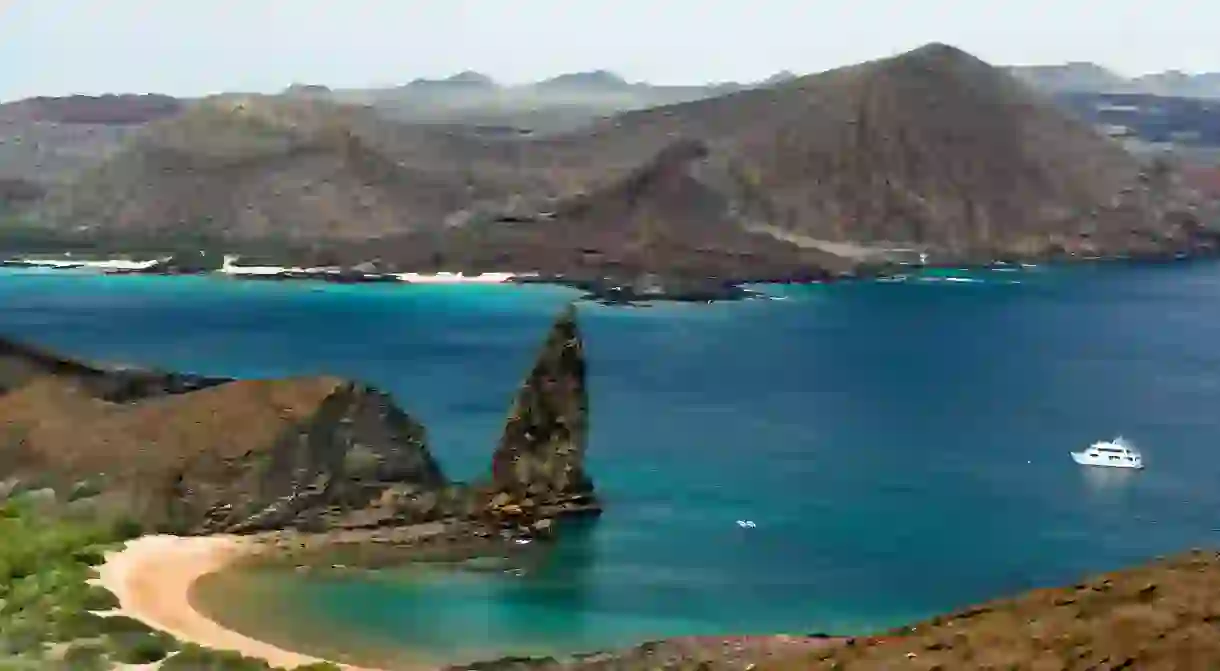All Aboard! Exploring the Galapagos by Boat

Explore the Galapagos by boat and see the islands that served as Darwin’s inspiration for his theory of evolution by natural selection. Everyone knows the yellow frame that traces the edges of the world-famous magazine’s cover, but now you can let National Geographic lead you off the page. National Geographic has joined Lindblad Expeditions to provide cruises to some of the world’s most striking landscapes.
National Geographic has a fleet of six cruise ships that have swam through the waters of the world, but two ships in particular, the Islander and the Endeavour II, offer trips to the Galapagos. This 10-day cruise explores the archipelago that is home to some of nature’s most enchanting animals.
The Galapagos is a wildlife sanctuary that is home to many endemic species – species of animals or plants that can be found nowhere else on earth – such as giant tortoises, blue-footed boobies, Galapagos hawks, lava lizards, marine iguanas, Galapagos penguins, flightless cormorants, and Darwin’s famous finches.
Since there are very few predators to the array of species that live on the islands, most of the animals seem unfazed by the presence of humans. You can snorkel next to hammerheads, splash with sea lions, walk alongside flamingos, and kayak past sea turtles.
While it is possible to stay in a hotel on one of the four inhabited islands, it is difficult to grasp the diversity of the archipelago when rooted in one place. The National Geographic ships cruise between islands, sometimes allowing you to hike on one island in the morning and snorkel off the shores of a different island after lunch.
Zodiac boats take guests from the ship to the islands’ different landing sites where local naturalists provide guided walks amongst the wildlife. Learn about the magnificent frigatebird’s puffy red chest and the marine iguanas diet. Walk the small beaches to see Sally Lightfoot crabs dance amongst the rocks and baby sea lions splash in the water. Visit the Charles Darwin Research Center on one of the inhabited islands, and take a bus to the highlands where giant tortoises inch their way across the grass fields.
After lunch or before dinner, the naturalists lead additional lectures, providing a history of Darwin’s expedition to the islands or teaching the rule of thirds for all aspiring photographers. All of the naturalists onboard are also photographers, so guests are encouraged to ask their camera questions and share their best photographs.
When not walking the lava fields or sandy beaches, guests are given options for several different water activities. Go on a Zodiac ride along the coast to see the boobies plunge into the water after a fish, or kayak the waters and watch sea turtles come to the surface. Snorkeling options are given every day; sometimes the Zodiacs will take guests to a small beach where they can go in and out of the water as they please. Other times, Zodiacs will take snorkelers to “deep-sea snorkel” where guests will climb out of the boats to go play with penguins. There’s sometimes even a glass-bottom boat option for non-snorkelers who would like to see a glimpse under the surface.
When not out exploring, enjoy the ship’s facilities. Sit on the deck and look out to sea where orcas and dolphins may make their way to the surface. Get a massage after a morning walk. Listen to locals perform Ecuadorian music after dinner. Lounge by the ship’s small pool and sunbathe. Browse the naturalist texts in the library. Run on the treadmill while looking out at the rock formations. Celebrate crossing the equator onboard with cocktails and limbo.
The famous yellow frame won’t seem the same after this cruise. National Geographic will no longer just be the magazine at the airport with the alluring photographs. Instead, memories of playful sea lions and slow-chomping tortoises will fill the yellow rectangle – this time in 3D.













